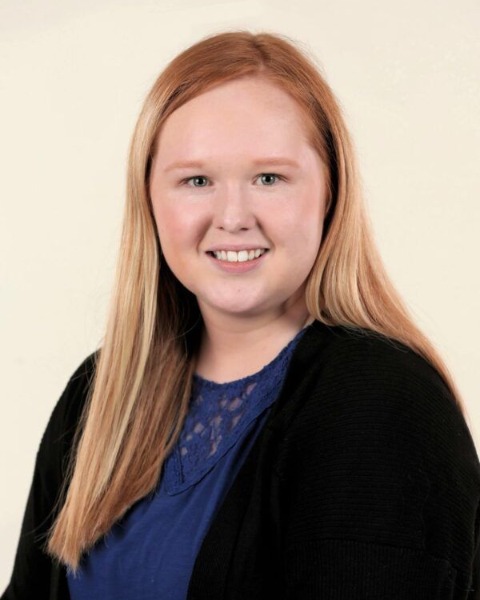Research (R)
PP1313 - Effects of Contralateral Sounds on Short-Latency Auditory Evoked Potentials

Hannah K. DeFord, B.S. (she/her/hers)
Audiology (AuD) Graduate Student
Wichita State University
Alamogordo, New MexicoFinancial Disclosures: I do not have any relevant financial relationships with anything to disclose.
Non-Financial Disclosures: I do not have any relevant non-financial relationships with anything to disclose.
Xiao-Ming Sun, PhD (he/him/his)
Professor
Wichita State University
Wichita State University
Wichita, KansasFinancial Disclosures: I do not have any relevant financial relationships with anything to disclose.
Non-Financial Disclosures: I do not have any relevant non-financial relationships with anything to disclose.
Lead Presenter(s)
Presenter(s)
Electrocochleography (ECOG) and auditory brainstem response (ABR) were tested in 36 normal-hearing young adults with a contralateral broadband noise presented 10 dB bellow the acoustic reflex threshold (ART). Results showed small but statistically significant changes to the latency and amplitude of certain waves in both ECOG and ABR waveforms. The individual variability was large in the effect of contralateral noise on ECOG and ABR waves. A moderate, yet significant, correlation between the change of ECOG waves and the ART was found. Implication on studies of the olivocochlear efferent function and clinical ABR tests of asymmetrical hearing loss will be discussed.
Summary:
RATIONALE: To investigate the olivocochlear efferent function, past studies examined effects of contralateral sounds on action potentials (AP) with ECOG procedures in animals and humans. However, results from those studies were inconsistent and inconclusive. In clinical audiology, contralateral masking with ABR measurements has been recommended to prevent crossover responses in patients with asymmetrical hearing loss, whereas data has been scarce concerning effects of contralateral sound on ABR components recorded in those patients. This study aimed to examine how contralateral noise effects ECOG and ABR waveforms in normal-hearing young adults.
Methods: Data was collected from 36 qualified participants (mean age: 23.3 (± 3.2) years). Each participant met stringent subject inclusion criterions (e.g., negative otoscopic screening, single-peak 226-Hz tympanogram with the TPP between ± 50 daPa, air and bone-conduction thresholds within normal limits). The test ear was randomly selected for each participant. Contralateral acoustic reflex thresholds were tested using broadband noise and were obtained via a threshold seek method requiring two repeatable ≥ 0.03 mmho deflections.
Both ABR and ECOG measurements were conducted with 100 μs clicks presented at 85 dB nHL with a rate of 9.1/sec for a minimum of 1500 sweeps. Bandpass filtering was 10-2000 Hz for ECOG and 30-3000 Hz for ABR tests. For both ECOG and ABR, two tests were run, a baseline test and a test with a broadband noise presented to the contralateral ear 10 dB below the ART. For each test, two repeatable waveforms were obtained. Visible waves were marked: for ECOG, summating potential (SP) and AP, and for ABR, SP and waves I, III, and V. The amplitude and latency were determined for all waves.
Results: All qualified participants had results within normative ranges for measured ECOG and ABR waveforms. In the presence of contralateral noise, the mean latency change was a small increase (< 0.05 ms) for a few waves, whereas statistical significance was only found with SP in the ECOG waveform and ABR wave III (p < 0.05, Wilcoxon signed-rank test). While the amplitude was altered on average (< 0.1 µV) for most waves, only SP in the ABR waveform significantly increased and ABR wave V significantly decreased (p < 0.05, paired t-test). The variability was large for the changes of all ECOG and ABR components. The change in ECOG waves (SP and AP) had a moderate, negative correlation with the ART, which was significant (p < 0.01, Pearson product-moment correlation).
Conclusions: This study demonstrates that contralateral noise effects on both ECOG and ABR waveforms are small in mean data due to large individual variability, which correlates with the individual difference in ART. The results suggest that assessment of the olivocochlear efferent function with evoked potentials is highly variable. This may be a consequence of neural adaptation or fatigue due to continuous presentation of both the ipsilateral stimulus and contralateral masking sound. As a procedure in ABR tests of asymmetrical hearing loss, contralateral masking may alter ABR amplitudes of some waves in some patients, if not all. Additional studies are warranted.Learning Objectives:
